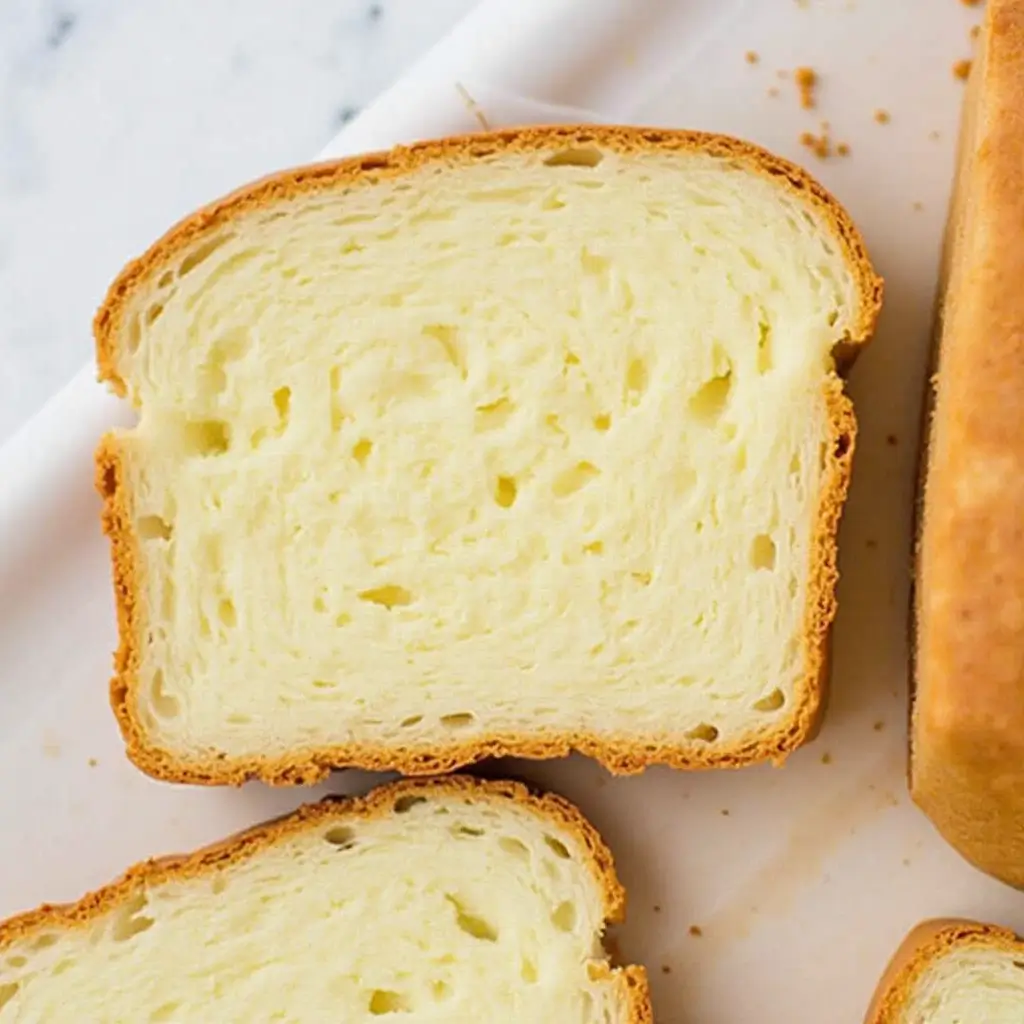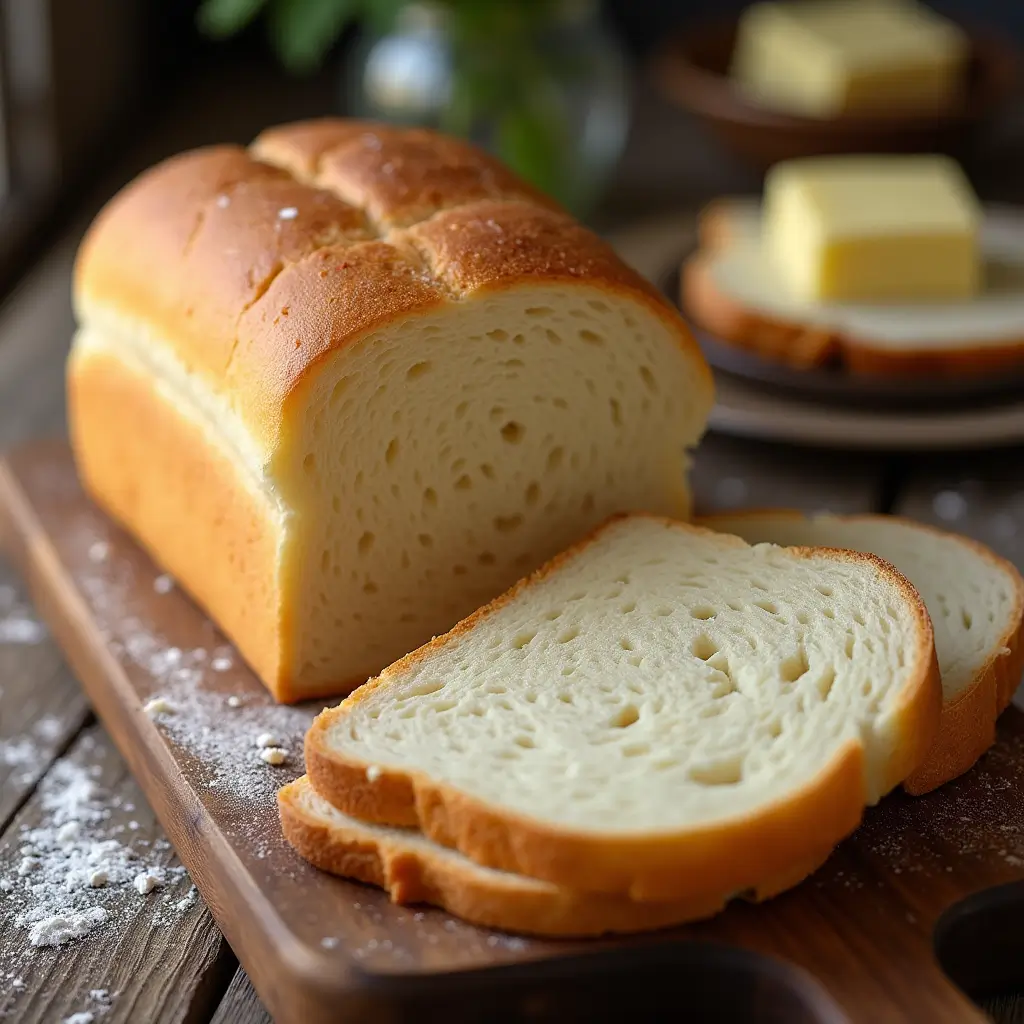Easy sandwich bread recipe: 6 Ingredients for the Best Loaf
Table of Contents
Have you ever wondered if making homemade bread is worth the effort? Do you think that baking a perfect loaf of sandwich bread requires complicated ingredients or hours of kneading? Think again! Today, we’re diving into an easy sandwich bread recipe that uses just 6 simple ingredients to create a soft, fluffy, and delicious loaf. So, are you ready to discover the secret to making the best sandwich bread at home? Let’s get started!
Overview
This easy sandwich bread recipe is special because it simplifies the bread-making process without sacrificing flavor or texture. The recipe takes about 2 hours and 30 minutes to prepare, including rising and baking time, making it perfect for beginners or busy individuals. The difficulty level is beginner-friendly, so even if you’re new to baking, you can create a beautiful and tasty loaf with ease.
Essential Ingredients
Here are the key ingredients for this easy sandwich bread recipe, along with substitutions and variations:
- All-Purpose Flour: The base of the bread, providing structure and texture.
- Substitutions: Use bread flour for a chewier texture or whole wheat flour for a healthier option.
- Water: Activates the yeast and provides moisture to the dough.
- Substitutions: Use warm milk for a richer flavor and softer crumb.
- Active Dry Yeast: The leavening agent that makes the bread rise.
- Substitutions: Use instant yeast for a faster rise (no need to activate it in water first).
- Sugar: Feeds the yeast and adds a slight sweetness to the bread.
- Substitutions: Use honey or maple syrup for a natural sweetener.
- Salt: Enhances the flavors and strengthens the gluten structure.
- Olive Oil or Butter: Adds richness and moisture to the bread.
- Substitutions: Use vegetable oil or coconut oil for a neutral flavor.
Step-by-Step Instructions
Step 1: Activate the Yeast
- In a small bowl, mix 1 cup of warm water (about 110°F or 43°C) with 1 tablespoon of sugar and 2 ¼ teaspoons (1 packet) of active dry yeast. Let it sit for 5-10 minutes until the mixture becomes frothy. This step ensures the yeast is active.
Step 2: Mix the Dough
- In a large bowl, combine 3 cups of all-purpose flour and 1 teaspoon of salt.
- Add the yeast mixture and 2 tablespoons of olive oil (or melted butter) to the flour. Stir until a shaggy dough forms.
- If the dough is too sticky, add a little more flour. If it’s too dry, add a tablespoon of water at a time until the dough is soft and slightly tacky.
Step 3: Knead the Dough
- Turn the dough onto a lightly floured surface and knead for about 5-7 minutes. Kneading helps develop the gluten, which gives the bread its structure.
- To knead, fold the dough in half toward you, then use the heels of your hands to push it away from you. Rotate the dough a quarter turn and repeat.
- The dough is ready when it becomes smooth and elastic.
Step 4: Let the Dough Rise
- Place the dough in a greased bowl, turning it once to coat the top with oil. Cover the bowl with a clean kitchen towel or plastic wrap.
- Let the dough rise in a warm, draft-free place for about 1 hour, or until it doubles in size.
Step 5: Shape the Loaf
- Once the dough has risen, punch it down gently to release the air. Turn it onto a lightly floured surface and shape it into a loaf.
- To shape, pat the dough into a rectangle, then fold the long sides toward the center, overlapping slightly. Press the seam to seal, then tuck the ends under and pinch to seal.
- Place the shaped dough into a greased 9×5-inch loaf pan, seam-side down.
Step 6: Second Rise
- Cover the loaf pan with a clean kitchen towel or plastic wrap and let the dough rise again for about 30-45 minutes, or until it nearly doubles in size.
Step 7: Bake the Bread
- Preheat your oven to 375°F (190°C) during the second rise.
- Bake the bread for 25-30 minutes, or until the top is golden brown and the loaf sounds hollow when tapped on the bottom.
- Remove the bread from the pan and let it cool on a wire rack for at least 10 minutes before slicing.
Assembly
To create a perfect loaf of sandwich bread:
- Presentation: Once cooled, slice the bread into even pieces using a serrated knife.
- Storage: Store the bread in an airtight container or bread box at room temperature for up to 3 days. Avoid refrigerating bread, as it can cause it to dry out faster.
- Serving Tips: Use this bread for sandwiches, toast, or as a side with soups and stews. Its soft texture makes it perfect for kids’ lunches or quick snacks.
Storage and Make-Ahead Tips
- Storage: Store leftover bread in an airtight container at room temperature for up to 3 days. You can also freeze the bread for up to 3 months.
- Make-Ahead: You can prepare the dough up to the first rise, then punch it down, shape it into a loaf, and refrigerate it overnight. In the morning, let it come to room temperature and complete the second rise before baking.
- Freezing: Freeze the cooled loaf, wrapped in plastic wrap and foil, for up to 3 months. Thaw at room temperature before slicing and serving.

Recipe Variations
- Whole Wheat Sandwich Bread: Substitute 1 cup of all-purpose flour with whole wheat flour for a healthier option. You may need to add a little more water to the dough.
- Honey Oat Bread: Add ½ cup of rolled oats and 2 tablespoons of honey to the dough. Top the loaf with additional oats before baking.
- Cinnamon Raisin Bread: Add ½ cup of raisins and 1 teaspoon of cinnamon to the dough. Sprinkle the top with cinnamon sugar before baking.
- Garlic Herb Bread: Mix in 1 tablespoon of minced garlic and 1 teaspoon of dried herbs (like rosemary or thyme) to the dough. Brush the top with melted garlic butter after baking.
- Cheesy Bread: Add ½ cup of shredded cheddar cheese to the dough and sprinkle more cheese on top before baking.
Conclusion
Making sandwich bread at home doesn’t have to be intimidating or time-consuming. With this easy recipe and just 6 ingredients, you can create a soft, fluffy, and delicious loaf that’s perfect for sandwiches, toast, or snacks. So, grab your apron and get ready to enjoy the satisfaction of baking your own bread. Happy baking!
FAQs
Q: Can I use instant yeast instead of active dry yeast?
A: Yes! Instant yeast can be added directly to the dry ingredients without activating it in water first. It also tends to rise faster.
Q: How can I make this bread healthier?
A: Use whole wheat flour or a mix of whole wheat and all-purpose flour. You can also add seeds like flax or chia for extra nutrition.
Q: Can I freeze the dough?
A: Yes, you can freeze the dough after the first rise. Shape it into a loaf, wrap it tightly in plastic wrap, and freeze for up to 1 month. Thaw overnight in the refrigerator before completing the second rise and baking.
Q: Why is my bread dense?
A: Dense bread can be caused by overworking the dough, not letting it rise enough, or using too much flour. Make sure to knead gently and give the dough enough time to rise.
Q: Can I make this bread without a loaf pan?
A: Yes, you can shape the dough into a round loaf and bake it on a greased baking sheet. It will have a more rustic shape but will still taste delicious.
Q: What can I serve with this bread?
A: This bread is perfect for sandwiches, toast, or as a side with soups, stews, or salads. You can also use it to make French toast or bread pudding.
Now that you have the ultimate guide to making easy sandwich bread, it’s time to get baking! Whether you’re a seasoned pro or a beginner, this recipe is sure to become a staple in your kitchen. Happy indulging!
Have you given our recipe a try ?
There are no reviews yet. Be the first one to write one.

